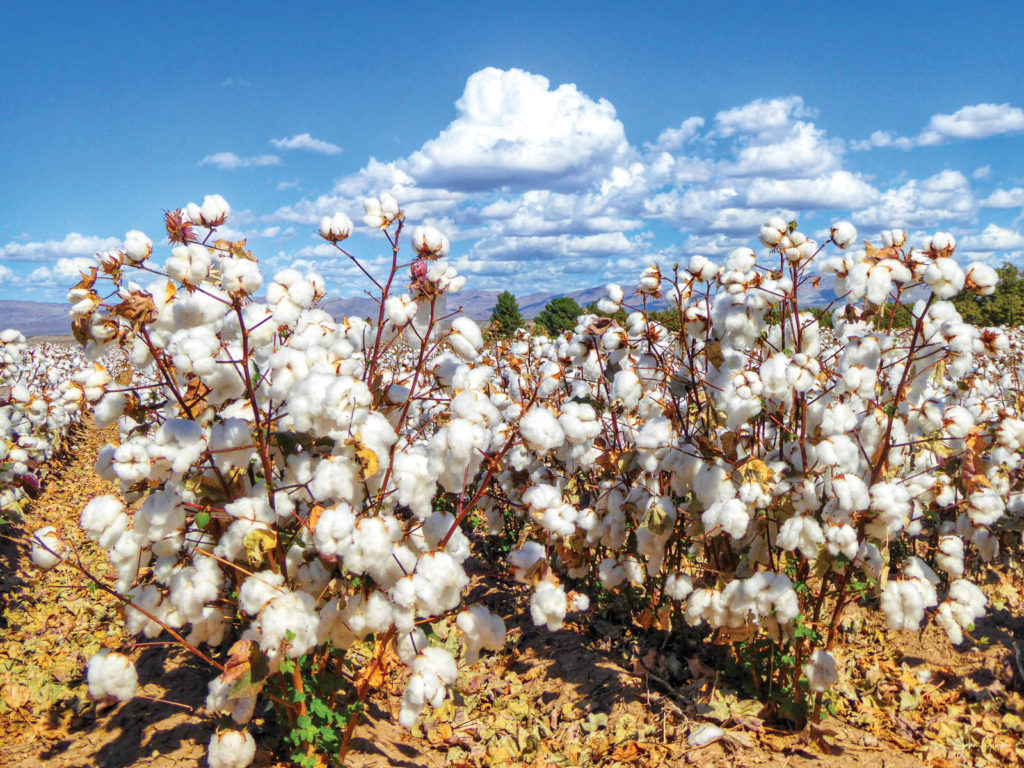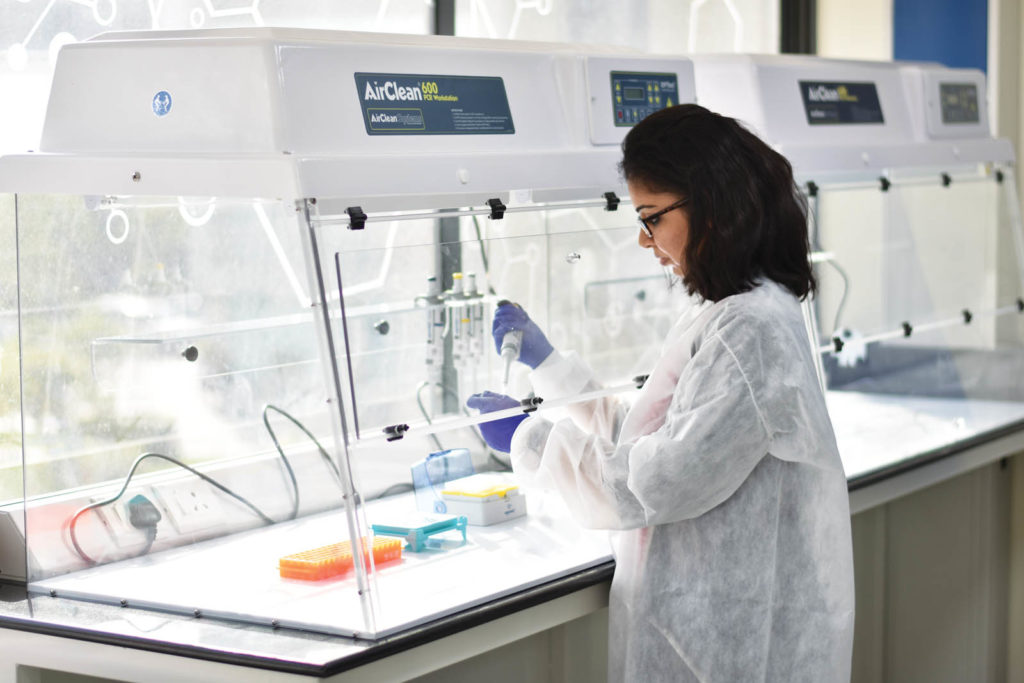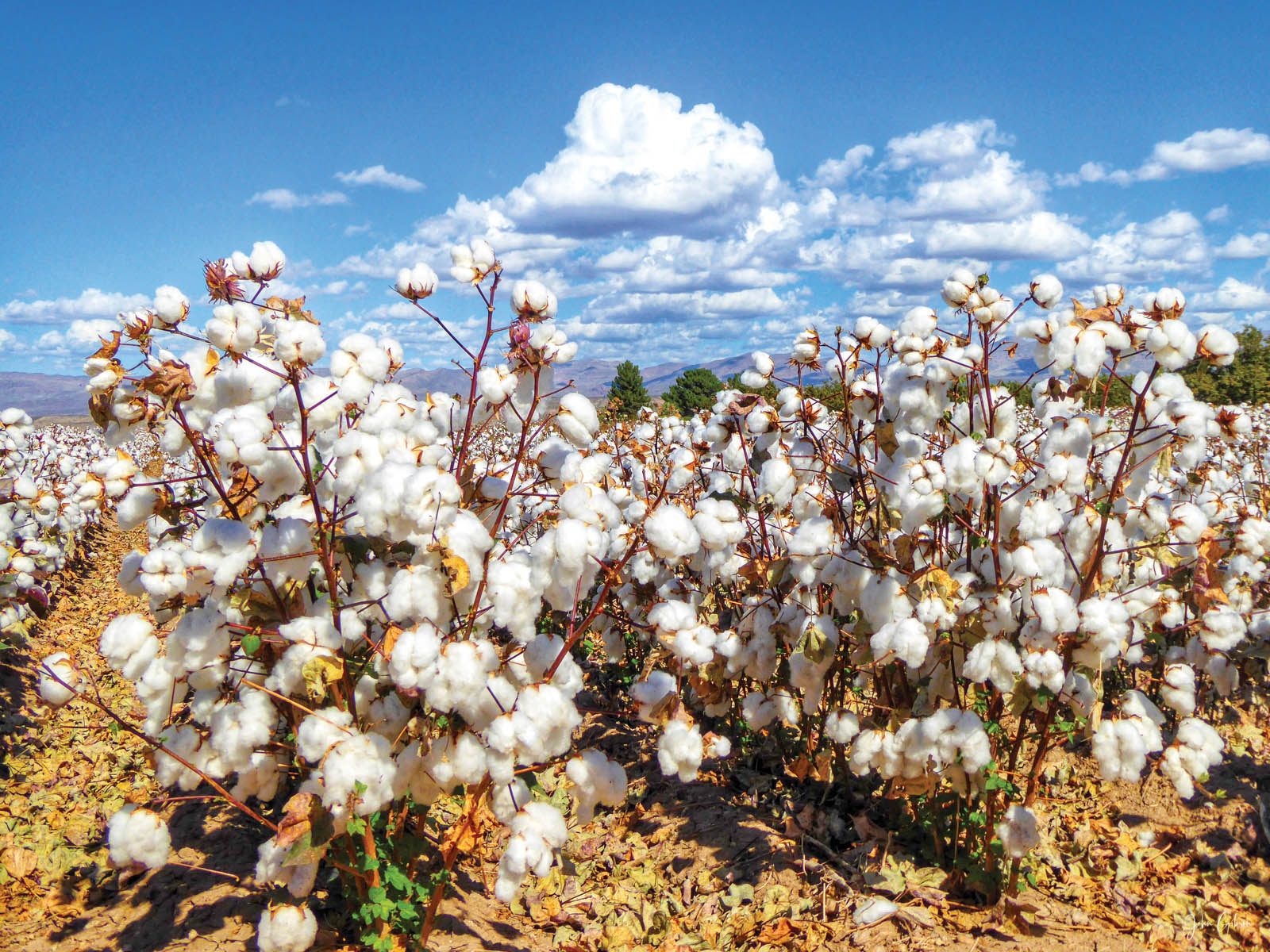
Empty shelves and rising prices are constant reminders of the many challenges and disruptions that continue to plague the complex supply chains that span the globe. But supply chain transparency is moving to the fore, with consumers and regulators paying ever more attention to where products are sourced and how they’re produced.
Cotton especially is under growing scrutiny as consumers demand data-driven evidence that the claims made around sustainability are, in fact, valid from start to finish. But while this problem, known as “greenwashing,” undermines important efforts to reduce the environmental impact of cotton production, regulators are focused on a more serious supply chain concern: the use of forced labor. In this respect, not only do fabric suppliers and end product manufacturers risk incurring the ire of—and potential outing by—consumers who are increasingly connected to this issue, they risk legal and financial repercussions as well if at any stage of the growing or production process, their products, or materials incorporated into their products, have involved the use of forced labor.
In the following, we explore two solutions available to fabric suppliers and end product manufacturers who deal in this fiber and are looking for more transparency in their supply chains.
Quantifying sustainability
Launched in 2020, the U.S. Cotton Trust Protocol®, based in Cordova, Tenn., was created for the purpose of establishing new sustainability standards for growing cotton, says Gary Adams, Ph.D., president. Its intention is ensuring the use of the most sustainable and responsible production methods so that the cotton-growing process “contributes to the protection and preservation of the planet,” while offering “article-level supply chain transparency” on its sustainable cotton fiber
to all members, he explains.
As of this writing, the program has enrolled more than 900 mill and manufacturer members from 30 regions and countries worldwide, including the U.S., Western Europe, Pakistan, Bangladesh, India, China, Latin America, Thailand, Indonesia, Vietnam, Turkey, Korea, Japan and Taiwan. It currently counts more than 1,000 U.S. grower members who are located in 17 of the cotton-producing states and in 147 counties. In 2022, the number of U.S. cotton growers participating in the program doubled, enrolling an estimated 1.1 million acres.
Additionally, there are more than 40 brands and retailers that have joined the program, among them Levi Strauss & Co., Gap Inc. and its various lifestyle offshoots like Old Navy, Gap, Banana Republic and Athleta, along with U.K. retailers likes NEXT PLC and Tesco. Ralph Lauren Corp. was also recently added to the roster.
The Trust Protocol focuses on six key sustainability metrics—water use, energy efficiency, land use, soil health, soil carbon and greenhouse gas emissions—seeking ongoing, quantifiable, verifiable and measurable improvements in each.
Consider water use and energy efficiency. Adams says that two-thirds of the cotton grown in the U.S. relies only on natural rainfall rather than irrigation.
“The 2025 sustainability goal for water use is to increase efficiency by 18%,” he says. “In 2020/21, Trust Protocol growers’ aggregate data showed an increase by 14% [in efficiency], which puts them on track to meet the 2025 goal.
“The energy use metric includes all energy used in the production of one crop from the pre-planting to post-harvest activities,” he continues. “In 2020/21, Trust Protocol growers reduced their energy use 27% compared to the 2015 baseline.”
Trust Protocol data shows that improvements in every sustainability metric were achieved by participating growers during the 2020/21 crop year compared to the 2015 baseline. As a result, various entities are paying attention. For example, during its first year the program was recognized by the Textile Exchange and Cotton 2040 as a sustainable cotton-sourcing option for brands seeking to fulfill their commitments, says Adams.
“And in May 2022, the program was approved as a standard for sustainable cotton by Siegelklarheit, an initiative of the German Federal Government,” he adds. “As a result, members of the Partnership for Sustainable Textiles [PST] can use the Trust Protocol as another standard to calculate their share of sustainable cotton.
“With the increased scrutiny on sustainability, the program provides access to more sustainably grown cotton for brands and retailers and science-based, data-led assurances that consumers can have confidence in—something that has been lacking in the industry to date,” Adams adds.

Trust, but verify
Although the rapid growth and progress of the U.S. Cotton Trust Protocol toward improving the overall sustainability of the cotton industry is encouraging, U.S. regulators have begun demanding a much more stringent level of accountability and verification for imported goods like cotton. And unlike in the U.S. criminal justice system, the burden of proof is on importers to prove their products are in compliance with the law.
For anyone not up to speed on the Uyghur Forced Labor Prevention Act (UFLPA), which went into effect June 21, 2022, it’s essential to dig into the details now or risk having your imported goods or materials originating from the People’s Republic of China (PRC)—or from any third-party countries with Chinese input—detained at U.S. ports of entry and ultimately banned. Staying in compliance with this act will require stringent and comprehensive oversight of supply chains to ensure that at no stage of production/sourcing were there any inputs from China’s Xinjiang Uyghur Autonomous Region (XUAR)—which reportedly accounts for almost 20 percent of the global cotton supply—nor any involvement of forced labor by other minorities in China or by others identified on the UFLPA Entity List.
“The UFLPA has set a high standard of care for ensuring that ‘any goods, wares, articles, and merchandise mined, produced, or manufactured wholly or in part’ in the XUAR should be assumed to be the product of forced labor unless proven otherwise by ‘clear and convincing evidence,’” explains MeiLin Wan, vice president, textile sales, for Applied DNA Sciences. “It is a rebuttable presumption which puts the burden of proof on the importer of record.”
Items included on the Entity List are textiles, clothing, garments and other apparel; cotton; computer parts and electronics; hair products; rail transportation equipment; silica-based products; and polysilicon, including solar-grade polysilicon and other downstream items. Several—textiles, cotton/cotton-based products, apparel and silica-based products—have been designated as high priorities for UFLPA enforcement.
But importers have certain tools at their disposal to help them avoid running afoul of the UFLPA, such as DNA traceability and isotopic testing, which the Department of Homeland Security (DHS) has said may be used as evidence to (potentially) prove that the items in question are in compliance. This, says Wan, has “generated significant interest” in both tests.
Formed in 2002 and headquartered in Stony Brook, N.Y., Applied DNA Sciences provides supply chain authentication and intellectual property protection solutions to multiple industries (apparel, textiles, leather, printing and packaging) by way of its CertainT® authenticity platform. The company works with recycled polyester, synthetics, leather, down and feather, specialty coatings, secure labels and advanced-identification thread.
“For cotton, CertainT consists of three pillars—isotope testing, cotton DNA testing (genotyping), and SigNature® molecular tagging for fiber, [representing] a comprehensive forensic cotton authentication system from fiber all the way to finished goods,” Wan says. “We believe it is incumbent on the importer to incorporate science-based data and information to support their documentation at all stages of their supply chain(s) and not just test finished products of uncertain origin(s).”
Wan says Applied DNA Sciences has been testing cotton since 2009, conducting “tens of thousands” of these tests on different cotton types, verifying their origin. The company is also able to substantiate (or disprove) specific cotton claims by performing polymerase chain reaction, or PCR-based tests for GMO markers on, for example, organic, pima or Egyptian cotton.
“We have seen some surprising results with 100% cotton samples that contain cotton from multiple geographic origins,” says Wan. “We’ve also analyzed cotton blended with recycled polyester and other finishes, such as fire-retardant coatings.”
Isotope testing can also be used to provide additional documentation that a cotton producer’s or manufacturer’s claims regarding origin or organic production are authentic.
“DNA-based PCR testing is very accurate and precise and is conducted at the molecular level, typically at parts per million or billion,” Wan explains. “The potential for a false positive/false negative using PCR-based technology approaches zero.”
Pamela Mills-Senn is a Seal Beach, Calif.-based freelance writer.








Leave A Comment